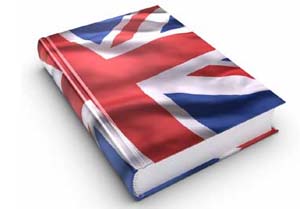 |
|
 |
|
| Visite: 1207 | Gradito: |
Leggi anche appunti:AustraliaAUSTRALIA General features It is the largest island in the world Romantic poetryROMANTIC POETRY Sotto quest'ampia definizione c'č un enorme varietą di autori DatabaseDatabase A database is a collection of data, or information, specially organized |
 |
 |
THE ORIGINS OF AMERICA (1492-1776)
The original inhabitants of the USA were the Amerindian people.
The first recorded expedition of Europeans to America came with Christopher Columbus in 1492.
He was followed by Spanish colonisers who reached Florida in 1513 and New Mexico in 1540.
The first British settlement was in Jamestown in Virginia in 1607 and in 1608 French settlements were established in Quebec, Canada.
In 1620 the Pilgrim Fathers arrived, escaping from religious persecution. They founded a colony in Boston, Massachusetts, in New England.
THE AMERICAN WAR OF INDEPENDENCE (1775 - 1783)
The British controlled the 13 colonies which formed the basis of what is now known as the USA.
They virtually ran their own affairs and resented having to pay taxes and have their laws and trade subjugated to a distant English monarch.
The rebellion began in 1775 with the Boston Tea Party, and in 1776 they issued the Declaration of Independence at the same time they nominated George Washington as their first President.
The British army was defeated by a lack of organisation, and in addition, the French supported the American rebels.
In 1787 the Americans drafted a written code defining the powers of the government: the American Constitution.
THE NINETEENTH CENTURY
(1800 -1850)
The period following the American Declaration of Independence was one of war and expansion for the New America.
Thomas Jefferson bought the French territories, the Louisiana and ended French control in mainland America.
In 1819 the USA bought Florida from Spain.
In 1845 Texas and part of Mexico declared itself independent and decided to join the USA. Mexico contested this, but at the end of a 3 year conflict America acquired not just Texas, but also Arizona, California, New Mexico, Nevada and Utah.
Around 1848, at the end of the Mexican-American war, gold was discovered in San Francisco, California. This led to the beginnings of a massive movement of peoples, who hoped to become rich quickly.
The fast expansion of the new America began to divide the Americans. The southern states, where slavery was allowed and actively used, controlled the country. while, the northern states disagreed with slavery. In 1860, Abraham Lincoln became president. He was against slavery and tried to pass laws against it. South Carolina, rebelled against this and broke away from the Union. Ten other southern states followed its example and formed the Confederate States of America.
In 1861 this led to a war between the northern states (the Union) and the southern states (the Confederates). The war lasted 4 years. It was won by the Union and slavery was abolished in 1863. Lincoln in 1865 was assassinated and the southern states were occupied by northern soldiers until 1877.
With their withdrawal, the southern states instituted a policy if segregation, a form of racial apartheid, which remained in force for the next hundred years.
The last 2 states to be added to the Union were Alaska in 1959 and Hawaii in 1898.
The great War (1914- 1918)
The Americans initially saw the war as a European affair and were loath to become involved (li ci potrebbe andare bene anke "wan't be involved"?).
However, trade between the Allies and the USA increased and this trade included armaments.
American ships carried arms to the Allied ports.
The Germans became increasingly frustrated by this level of trade and by what they saw as American collaboration with the Allies. In the early months in retaliation, they sank five American ships carrying supplies to the Allies.
Despite his intentions of neutrality, Wilson had no choice but to become involved and on April 2nd 1917, the USA entered the war on the Allied side.
the post-war years were seen as one of the great periods of growth for the USA.
The USA had plenty of raw materials at its disposal.
This was the era of the mass produced consumer goods, with a growth in factories and jobs.
This new-found wealth encouraged many smaller savers to buy stocks and shares but
farmers were having problems selling their produce due to poverty former European markets.
American farmers found they were growing produce they could not sell and, by 1924 600000 of them were bankrupt
This crisis became evident in 1929.
With the fall in profits, the fall in shares followed fast and fearful shareholders began selling their shares.
On 24th October, 1929 13 million shares were sold.
On the following October 29th 16.5 million were sold.
Thousands of banks and over 100000 businesses closed down.
25 percent of the population, were unemployed.
Franklin Roosevelt was elected president in March 1933.
He promised to help the problem of the American poor and he did this by instigating a series of laws which set up government agencies.
The purpose of these agencies was to re-employ the millions out of work and bring prosperity back to America.
So saving America from the Economic Depression.
The second world war (1939 - 1945)
In 1939 Europe went to war again.
At first the Americans did not want to get involved with another European conflict.
In 1941, the Japanese attack on Pearl Harbour, Hawaii, which killed 2000 Americans, precipitated their decision and the Americans joined the Allies.
The American economy was geared to war production, in addition they invented the bomb which would end the war: in 1945 two atomic bombs destroyed two Japanese cities and brought the war to an end.
The Cold war (1945- 1990)
The Marshall Plan (1945-1952)
The end of the Second World War saw the division of Europe between free states and those controlled by the Soviet Union.
Since the Russian revolution in 1917, the USA had feared an export of communism and its ideals.
A war-tired Europe provided the ideal ground for Communist expansion.
In 1948 president Truman put into motion the Marshall Plan, which literally gave food and resources to European countries to keep them away from communism. By 1952, the Plan had worked. Communist euphoria had been set back.
The bay of Pigs (1961 - 1962)
The Cuban crisis is more serious crisi of the Cold War as it came close to bringing the world into a nuclear war.
It began when the Americans, under John Kennedy's presidency, sent 1400 anti-Cubans to the bay of Pigs to try and end Castro regime.
The force was easily defeated and Castro, asked the Russians for protection.
Krushev provided this by sending arms and supplies but also by attempting to set up a nuclear base in Cuba.
When the Americans discovered this, they gave Russia an ultimatum: either the bases were removed or the USA would launch a nuclear attack on Russia.
The Vietnam War (1968 - 1973)
The Vietnam War also began initially as a localised affair.
As in Korea, North Vietnam was controlled by a communist regime under Ho Chi Minh, while the south was under a democratic government.
Ho Chi Minh invaded South Vietnam in an attempt to unify the country.
In 1968 the Americans sent 500000 of their men to South Vietnam, while the Russians and Chinese sent weapons and supplies to Ho Chi Minh and his guerrilla army, the Vietcong.
It was a guerrilla war and therefore the enemy was hard to identify and eliminate.
President Nixon tried to end the war by sending his emissary to secret talks with the Vietnamese and Russians.
March 1973 the last American left Vietnam.
Gorbachev and the end of the Cold War (1985-current)
The ideological conflict between the Soviet Union and the USA continued in the escalation of their nuclear arsenal.
In December 1987 Gorbachev signed a peace treaty with the American president, Ronal Reagan.
In 1989 communist regimes all over central and eastern Europe overthrew their Soviet-controlled governments and prepared the way for democratic regimes to become established.
A man on the Moon (1969)
Assassination of J. Kennedy in 1963 and the Civil Rights leader, Martin Luther King in 1968. In the 1970s and 1980s they made inroads into ending bloody wars they had become involved in: Vietnam (1975) and the Cold War (1987). Americans saw a president resign in the Watergate Scandal (President Nixon, 1974), and another barely survive the Irangate Scandal (President Reagan, 1986) where the USA had sold arms to Iran, and the profits from the arms sales being diverted to support the Nicaraguan "Contra" (anticommunist) guerrillas.
In the 1990s there was the Gulf War, impeachment of the president Clinton due to an illicit affair .
 |
| Appunti su: |
|
| Appunti Spagnolo |  |
| Tesine Tedesco |  |
| Lezioni Francese |  |